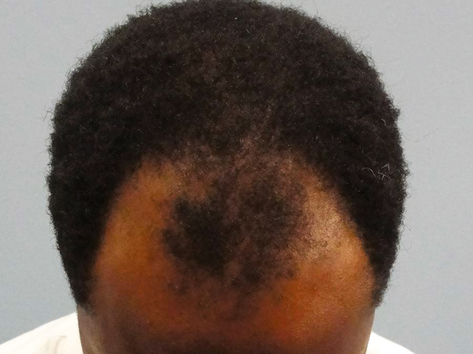ALOPECIA

I was at an event the other day where a man walked up to the podium to give a speech. I had already been seated for 3 hours at least. So by now, I had absolutely no interest in what was going on. However, I did hear him say he was 30 years old. A few seconds later, the hall burst into laughter. I eventually found out that he was bald and no one believed that a person that bald should claim to be that young. From that day forward, I picked an interest in alopecia, also known as baldness, out of curiosity. Let’s understand what it really is shall we?
WHAT IS ALOPECIA?
It is an acquired skin disease that affects the hair-bearing area. It leads to a partial or complete absence of hair on the areas of skin. It is commonly termed baldness. It is a peculiar form of hair loss.
Partial alopecia can be defined as one or more patches of baldness on different areas. Sometimes however, alopecia leads to complete baldness.
TYPES OF ALOPECIA
Three known types of alopecia include:
- Alopecia Areata: presents itself as round and smooth patches of different sizes.
- Alopecia Areata Totalis: Presents as total loss of hair on the scalp I.e. complete baldness
- Alopecia Areata Universalis: is a rare form and presents itself as a loss of hair over the scalp as well as the body.
These are different variations of alopecia that is caused by the autoimmune disorder.
CAUSES OF ALOPECIA
Basically, it is an autoimmune condition. An autoimmune condition is likely to happen when a person’s immune system mistakes its own cells for foreign particles. In this case, the immune system starts damaging its healthy cells. Alopecia happens when the immune system attacks hair follicles (the structure from which hair grows). As a result, follicles become smaller that either leads to hair loss or stops producing hair altogether.
This condition also occurs in people with a family history of autoimmune conditions. It is suspected that genetics also contribute to alopecia areata.
Moreover, researchers also confess that the real cause behind this condition is unknown.
MEDICAL TREATMENT AND NATURAL TREATMENT OF ALOPECIA
Medical treatment:
There are many medications available that can be used to treat this condition. Some of them can be applied on the scalp to stimulate hair growth. Over-the-counter (OTC) drugs are available for this purpose and some others can also be used by prescription.
Injections are also used for mild patch alopecia. Specifically, steroid injections help to stimulate hair growth. This treatment demands to be repeated every one or two months until the condition is cured properly.
Oral treatment is also an option but for this, one has to consult the doctor to prevent further complications and side effects. In addition to it, oral immunosuppressants can also be used to block the immune system’s response. Although this method is highly effective, it is not advisable for use for a long period of time because of its side effects.
Radiation treatments
There are types of radiation treatments that also help to cure the condition. I.e. Light therapy that comprises oral medications along with the use of UV light.
Natural treatment:
It is important to note that these natural remedies are not clinically tested so their effectiveness is not assured, but, it has been observed that these remedies have worked wonders in some cases. Natural treatment has little or no side-effects so I guess that’s a good thing.
- Onion juice or garlic gel is often applied to the bald area. It promotes hair growth.
- Massage is an all-time healthy option. As it helps in hair growth by opening the clogged follicles.
- Aloe Vera gel is used to treat hair loss. It helps to unclog hair follicles blocked due to excessive oil. You can use shampoo or conditioner that contains Aloe-Vera as one of its ingredients.
- Coconut oil works wonders in this regard. It penetrates inside the skin and reduces the protein loss from the hair. You can massage with coconut oil two hours before hair wash, or leave it overnight. It is healthy for skin as well as hair.
- Fish oil also has the same qualities and can be used for the same cause.
You can try these natural remedies and if they do not help then talk to your doctor for treatment and medications.
Remember! The good thing is that in all conditions of alopecia areata, the hair follicles remain alive. Hair will automatically regrow and can resume normal hair growth once the problem is resolved. At times, hair growth may occur without treatment and sometimes even after many years of hair loss.
It is good to consult a doctor and get to know the reason behind the loss, so it can be resolved once and for all.

